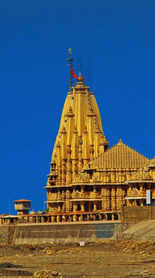Ganga River likely changed direction 2500 years ago due to a massive earthquake, reveals study
Times of IndiaTIMESOFINDIA.COM/ Created : Jul 5, 2024, 13:17 IST
You're Reading

Ganga River likely changed direction 2500 years ago due to a massive earthquake, reveals study 
Himachal Pradesh weather update: Heavy rains prompt closure of over 100 roads in the state 
Saudi announces multiple visa options for Indians 
Mysterious castle emerges from sand dunes in North Carolina’s Outer Banks!
Synopsis
As climate change and human activities continue to impact river systems worldwide, the lessons learned from this ancient earthquake may hold important insights for navigating the Ganga's ever-changing course in the years to come.
As climate change and human activities continue to impact river systems worldwide, the lessons learned from this ancient earthquake may hold important insights for navigating the Ganga's ever-changing course in the years to come. Read less

Read more: 10 facts about Ganges, the largest river in India
The study, published in Nature Communications, highlights how such a quake could have inundated anything in its path. The Ganga River, originating in the Himalayas, merges with the Brahmaputra and Meghna rivers before flowing into the Bay of Bengal, forming the world’s second-largest river system after the Amazon.
Read more: 5 famous national parks in Gujarat for wildlife enthusiasts
While avulsions, or river course changes, are common and often triggered by earthquakes, this is the first confirmed instance of an earthquake causing avulsion in a major delta, according to lead author Elizabeth L. Chamberlain of Wageningen University, Netherlands.

The quake's origin might be from a subduction zone to the south and east, where an oceanic crust plate is pushing under Bangladesh, Myanmar, and northeastern India, or from faults at the Himalayas' base, which are rising due to the Indian subcontinent's collision with Asia. A 2016 study led by Steckler showed these zones building stress, capable of producing earthquakes similar to the one 2,500 years ago. Such an event today would impact around 140 million people.

Refrain from posting comments that are obscene, defamatory or inflammatory, and do not indulge in personal attacks, name calling or inciting hatred against any community. Help us delete comments that do not follow these guidelines by marking them offensive. Let's work together to keep the conversation civil.
closecomments
Refrain from posting comments that are obscene, defamatory or inflammatory, and do not indulge in personal attacks, name calling or inciting hatred against any community. Help us delete comments that do not follow these guidelines by marking them offensive. Let's work together to keep the conversation civil.
Next story
Himachal Pradesh weather update: Heavy rains prompt closure of over 100 roads in the state
Popular Galleries
Trending Stories
Unforgettable stops on the Golden Triangle tour
Visit Jibhi, a hidden offbeat gem in Himachal Pradesh, for a serene vacation
Hyderabad Airport issues travel advisory after Microsoft global outage; 23 flights cancelled
Microsoft global outage: Airports at Delhi, Jaipur, Hyderabad, Mumbai severely affected
Lesser-known natural phenomena worth travelling for



























Comments (0)